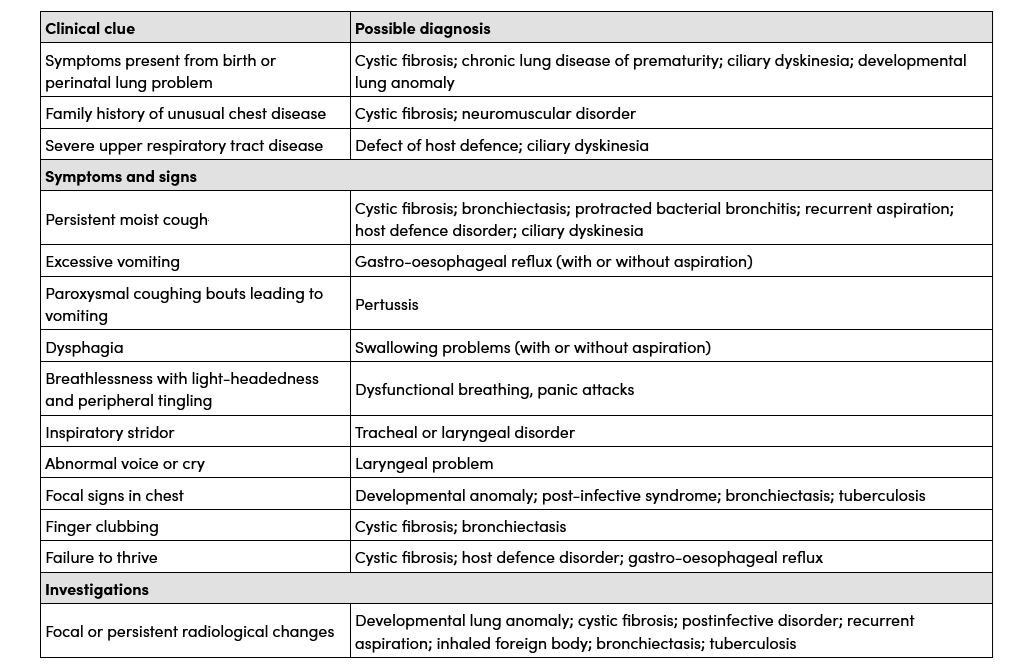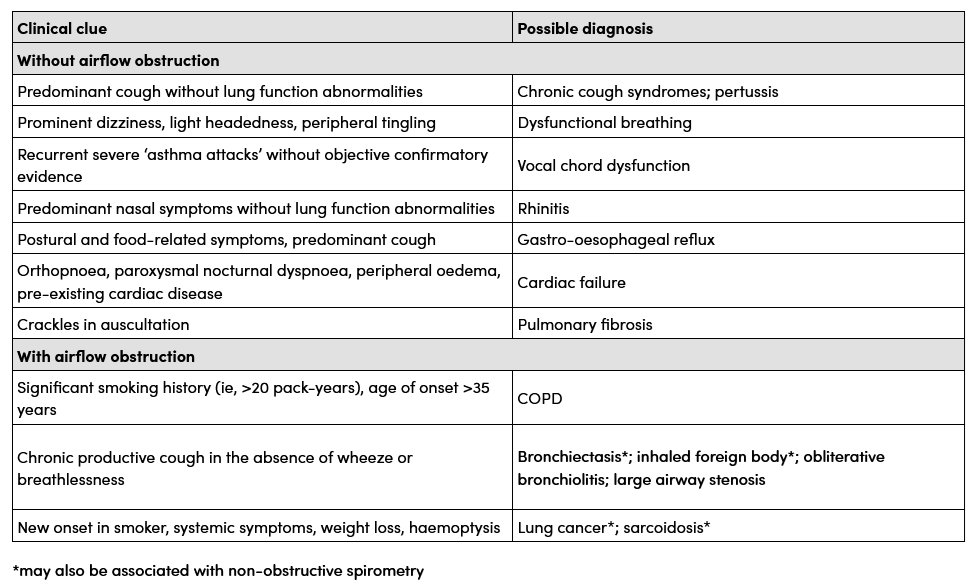Initial assessment if possible asthma
Initial clinical assessment:
Considerations in the clinical history
Obtain a structured clinical history in people with suspected asthma. Specifically, check for:
- reported wheeze, noisy breathing, cough, breathlessness or chest tightness, and any variation (for example, worse during the night or early morning, or seasonal) in these symptoms
- any triggers that make symptoms worse
- a personal or family history of asthma or allergic rhinitis
- symptoms to suggest alternative diagnoses
- alternative diagnoses to consider in wheezy children

- alternative diagnoses in adults

Do not confirm a diagnosis of asthma without a suggestive clinical history and a supporting objective test. Code as suspected asthma until the diagnosis is confirmed.
If the diagnosis of asthma is confirmed, record the basis for this in the person's medical records, alongside the coded diagnostic entry.
Physical examination
- examine people with suspected asthma to identify expiratory polyphonic wheeze and signs of other causes of respiratory symptoms but be aware that even if examination results are normal, the person may still have asthma
Initial treatment and objective tests for acute symptoms at presentation
- treat people immediately if they are acutely unwell or highly symptomatic at presentation, and perform objective tests that may help support a diagnosis of asthma (for example, eosinophil count, fractional exhaled nitric oxide [FeNO], spirometry or peak expiratory flow [PEF] before and after bronchodilator) if the equipment is available
- if objective tests for asthma cannot be done immediately for people who are acutely unwell or highly symptomatic at presentation, carry them out when acute symptoms have been controlled, and advise people to contact their healthcare professional immediately if they become unwell while waiting to have objective tests
- be aware that the results of spirometry and FeNO tests may be affected in people who have been treated with inhaled corticosteroids (the test results are more likely to be normal)
Notes:
- eosinophil count - number of eosinophils (a type of white blood cell) measured in a blood sample. Their levels are raised in asthma and other allergic diseases, and less commonly with malignant diseases, parasite infections, reactions to some medicines, and a small number of rare diseases
- FENO test - test that measures the amount of nitric oxide (NO) present on exhalation, usually expressed in parts per billion
- PEF is a measure of the maximum speed of expiration, generally expressed in litres per minute
- PEF variability is a measure of the extent to which this varies over time and can be expressed numerically as amplitude percentage mean
- is calculated by subtracting the lowest value measured each day from the highest value on the same day, and averaging this over the number of days on which PEF is measured
- see peak flow variability calculator to work out the amplitude percentage mean
- PEF variability is a measure of the extent to which this varies over time and can be expressed numerically as amplitude percentage mean
Reference:
Create an account to add page annotations
Annotations allow you to add information to this page that would be handy to have on hand during a consultation. E.g. a website or number. This information will always show when you visit this page.